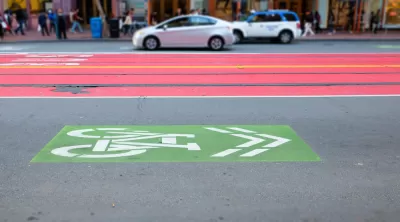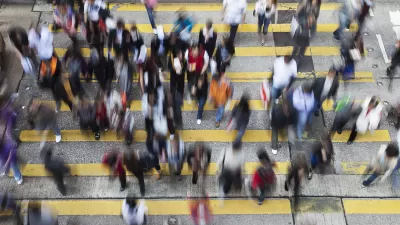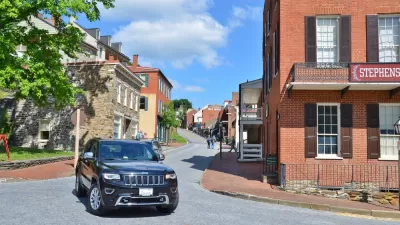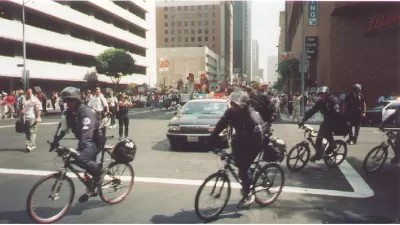Education, engineering, and enforcement are the three "e's" of Vision Zero in San Francisco. A lack of on of those "e's"—enforcement—might explain why more people are dying on the city's streets this year that any year since the city adopted Vision Z

San Francisco is five years into a ten-year Vision Zero goal, according to an article by Heather Knight, but traffic fatalities are rising on the city's streets. So far in 2019, "22 people have lost their lives on the city’s streets. That’s one less than died in all of 2018 and two more than died in all of 2017." That total includes 15 pedestrians. Another five people have died on freeways located in the city.
"[The city is] on pace to surpass the 31 deaths in 2014, the year Vision Zero began," adds Knight.
Looking for answers to the question of why San Francisco is backsliding on traffic safety, Knight identifies a lack of traffic enforcement as a likely culprit.
"New figures obtained by The Chronicle show the San Francisco Police Department is ticketing far fewer drivers for illegal behavior behind the wheel than it did the year Vision Zero was adopted," according to Knight. The neglect of traffic enforcement "could be explained by too many unfilled vacancies in the department’s traffic division and ever-changing leadership of the crucial unit."
The article includes more information about the lack of traffic safety enforcement, including data specific to the kinds of tickets written and in which neighborhoods.
FULL STORY: Deaths on SF’s streets are up. Traffic enforcement is down. ‘It’s hard to believe these aren’t related’

Planetizen Federal Action Tracker
A weekly monitor of how Trump’s orders and actions are impacting planners and planning in America.

Map: Where Senate Republicans Want to Sell Your Public Lands
For public land advocates, the Senate Republicans’ proposal to sell millions of acres of public land in the West is “the biggest fight of their careers.”

Restaurant Patios Were a Pandemic Win — Why Were They so Hard to Keep?
Social distancing requirements and changes in travel patterns prompted cities to pilot new uses for street and sidewalk space. Then it got complicated.

Albuquerque Route 66 Motels Become Affordable Housing
A $4 million city fund is incentivizing developers to breathe new life into derelict midcentury motels.

DC Area County Eliminates Bus Fares
Montgomery County joins a growing trend of making transit free.

Platform Pilsner: Vancouver Transit Agency Releases... a Beer?
TransLink will receive a portion of every sale of the four-pack.
Urban Design for Planners 1: Software Tools
This six-course series explores essential urban design concepts using open source software and equips planners with the tools they need to participate fully in the urban design process.
Planning for Universal Design
Learn the tools for implementing Universal Design in planning regulations.
Heyer Gruel & Associates PA
JM Goldson LLC
Custer County Colorado
City of Camden Redevelopment Agency
City of Astoria
Transportation Research & Education Center (TREC) at Portland State University
Camden Redevelopment Agency
City of Claremont
Municipality of Princeton (NJ)





























